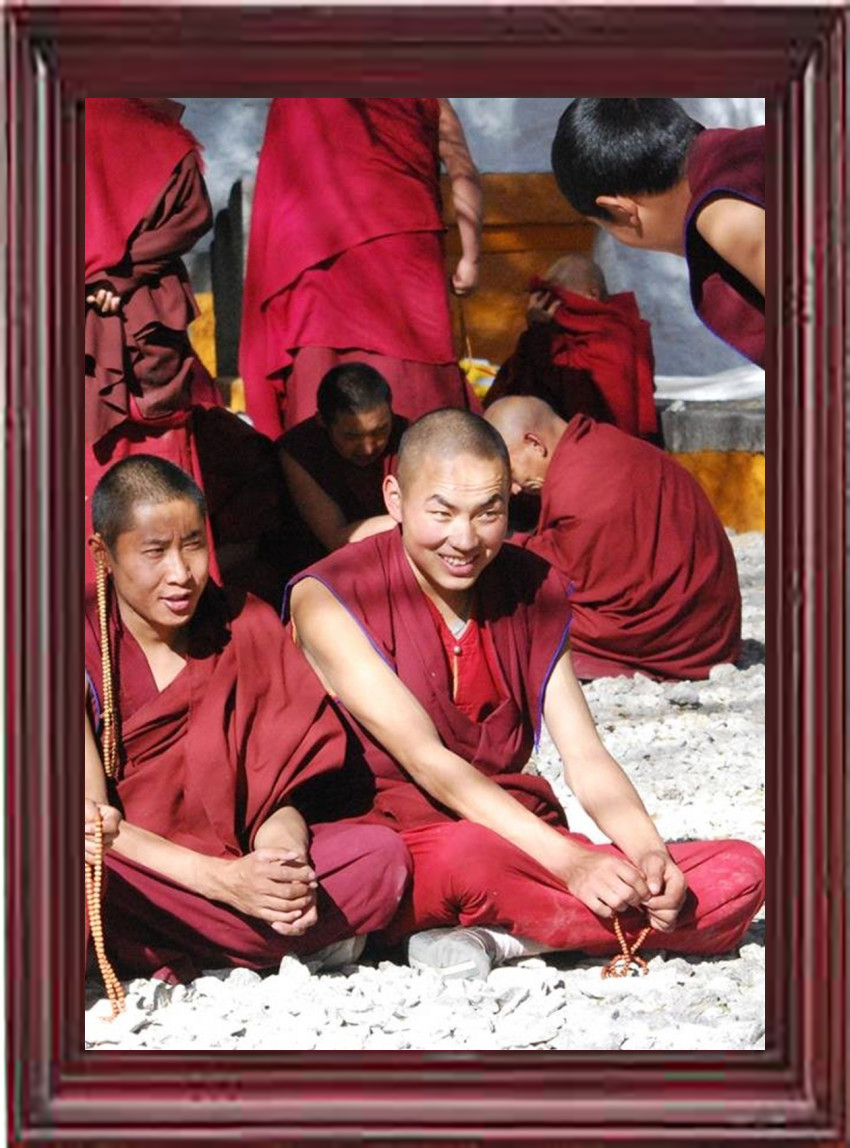
Liên Hoa Quang
Trang chủ »»
Giải thoát nghĩa là trừ bỏ tận gốc rễ của mọi mê vọng, tận cả những ảo tưởng vi tế nhất
»»
Cỡ chữ:
Giải thoát nghĩa là trừ bỏ tận gốc rễ của mọi mê vọng, tận cả những ảo tưởng vi tế nhất
Mục đích của Giáo lý Phật Đà là giúp chúng ta giải thoát khỏi mọi ảo tưởng. Điều đó được gọi là Giác ngộ. Giải thoát nghĩa là không chỉ trừ bỏ các dạng ảo tưởng nhất thời, mà còn trừ bỏ tận gốc rễ của mọi ảo tưởng, tận cả những ảo tưởng vi tế nhất. Ngay cả một số điều mà ta coi là thông thái hay trong sáng thì cuối cùng vẫn cần được tịnh hóa.
Đức Phật chỉ dạy vô số phương pháp cho ta áp dụng nhằm loại bỏ ảo tưởng của mình. Theo truyền thống, được coi là có hơn tám vạn bốn ngàn pháp môn. Mỗi pháp trong đó phù hợp với nhu cầu của từng loại chúng sinh, cũng như sự khác biệt về động cơ và quyết tâm của họ. Ví dụ, một số chúng sinh quyết tâm từ bỏ hẳn luân hồi. Đó là mục tiêu chính của họ. Với họ, Đức Phật dạy pháp Tiểu thừa. Một số khác không những quyết tâm từ bỏ luân hồi, mà còn chối bỏ cả việc trụ lại trong niết bàn. Nói cách khác, mục đích của họ là thoát khỏi mọi thái cực, không những cho riêng mình mà còn vì lợi ích của tất cả chúng sinh. Với họ, Đức Phật dạy pháp Đại thừa. Trong cả hai trường hợp, Phật pháp đều nhằm để giải thoát chúng ta khỏi ảo tưởng.
Trích “Những lời dạy về pháp tu Ngondro dòng Longchen Nyingthig”, Dzongsar Khyentse Rinpoche
TMTR Trích dẫn
Nguồn ảnh bìa: sưu tầm
Liberation is a release from the very root of delusion, including the subtlest forms of delusion
The Buddha’s teachings aim to liberate us from all forms of delusion. That is what we call enlightenment. Liberation is not only a release from tempo- rary forms of delusion, but also from the very root of delusion. In using the term “delusion,” not only are we referring to some of the more gross forms of delusion, but also the subtlest forms of delusion. Even some things that we consider to be wise and virtuous are eventually the very things that need to be purified.
The Buddha taught numerous methods that we can use to release our- selves from delusion. Traditionally, the teachings speak of more than eighty- four thousand methods. Each of these is suited to the needs of a different kind of being and to the variations in motivation and determination that beings possess. Some individuals are determined to completely renounce samsara, for example. That is their main aim. For them, the Buddha taught the Shravakayana. Others are determined, not only to escape from samsara, but also to avoid dwelling in nirvana. In other words, their aim is to escape all extremes, not only for themselves, but also for the sake of all sentient beings. For them, the Buddha taught the Mahayana, or Great Vehicle. In either case, the methods the Buddha taught are intended to liberate us from delusion.
Dzongsar Khyentse Rinpoche, “Advice on the Longchen Nyingtik Preliminary Practices”

Tìm kiếm thông tin
Xin mời đăng nhập
Tra cứu từ điển
Đăng xuất khỏi website
Chú ý: Việc đăng nhập thường chỉ thực hiện một lần và hệ thống có thể ghi nhớ thiết bị này, nhưng nếu đã đăng xuất thì lần truy cập tới quý vị phải đăng nhập lại.
Quý vị vẫn có thể tiếp tục sử dụng trang này, nhưng hệ thống sẽ nhận biết quý vị như khách vãng lai.
